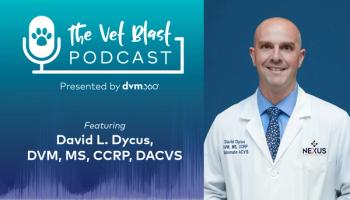
California board to allow RVTs to administer controlled substances under indirect supervision
Sacramento, Calif. - Registered veterinary technicians (RVTs) in California will be able to administer controlled substances under veterinarians' indirect supervision, according to a new interpretation of federal drug laws by the California Veterinary Medical Board (CVMB).
SACRAMENTO, CALIF. — Registered veterinary technicians (RVTs) in California will be able to administer controlled substances under veterinarians' indirect supervision, according to a new interpretation of federal drug laws by the California Veterinary Medical Board (CVMB).
While the new rules are expected to take effect by late summer for RVTs, it's not enough for the California Veterinary Medical Association (CVMA), which is pushing legislation to allow "indirect supervision" status for unregistered veterinary assistants (UAs) as well.
The association and veterinary board have been in opposition over the issue since last year's CVMB review of the Federal Controlled Substances Act (FCSA), which overturned its original interpretation of the law and cut off veterinarians' authority to allow both RVTs and UAs to administer controlled substances under the indirect supervision – or order – of the DVM. Since April 2006, when the opinion was released, RVTs and UAs have been permitted to administer controlled substances only under a veterinarian's direct supervision — defined by CVMB as the DVM's physical presence at the location where the health care is being performed.
After hearing testimony from DVMs on the demand for pain medication and an apparent shortage of veterinarians and RVTs, CVMB approved a regulation in October that reinstates a portion of the veterinarians' authority, says Sue Geranen, CVMB executive director. Slated to go into effect by August, the regulation allows veterinarians to instruct RVTs to work under indirect supervision, but provides that UAs must continue under direct supervision.
"Indirect supervision is sufficient for RVTs because they are educated and tested by the state in the calculation of drug dosages, pharmacology, controlled drug handling and regulations, and they undergo a background check," Geranen says, noting the state cannot assure consumers that lay staff receives comparable training.
In disagreement with the board's new FCSA interpretation, CVMA sponsored pending Senate Bill 969 that would again allow both RVTs and UAs to administer controlled substances under indirect authority. If passed, the bill would go into effect Jan. 1, 2008, and render CVMB's regulation moot.
The conflict between CVMB and CVMA legal interpretations stems from use of the term "drugs" in FCSA language, which states veterinarians have the authority to order RVTs or UAs to administer drugs under either direct or indirect supervision.
"The language just talks about drugs, so the assumption has been that drugs includes all drugs," Geranen says.
But upon further review, CVMB determined controlled substances are a separate subset of "drugs" and therefore needed to be specifically addressed with a new statute. CVMA argued that "drugs" include controlled substances and are addressed in the existing language.
"Unfortunately, the board goes along with their attorney's opinion and even if 100 other attorneys disagreed, we had no other way of arguing our point," says Valarie Fenstermaker, CVMA executive director. "If our bill goes through this year, hopefully we will be back to where we started."
CVMB's regulation, while not as liberal as CVMA's, still allows DVMs to continue to meet their clients' demands. "There is a consumer demand for pain medication for animals. The opposition to restricting controlled substances was that this would impact practices because veterinarians typically have lay staff administer pain medication after hours and on the weekends because there are not enough veterinarians and/or RVTs to perform this task," Geranen says.
A statement released by CVMB continues, "With the increased awareness of the need for pain control and pain medication in veterinary medicine over the past 25 years, there is a greatly increased and growing use of controlled drugs in veterinary medicine.
"Allowing RVTs under indirect supervision and lay personnel under direct supervision to administer controlled drugs provides the animal patient with the needed pain control while protecting both the patient and public safety."
While CVMA supports the regulation to restore some authority, it anticipates approval of the Senate bill. "As far as we know, there weren't any problems originally in the way it was done," Fenstermaker says of RVTs and UAs working under indirect supervision. "It is the veterinarians' licenses on the line, so they are responsible to make sure whoever is administering controlled substances is doing it correctly and under the right level of supervision. It is up to the veterinarians to make sure their staffs are trained and responsible."
Newsletter
From exam room tips to practice management insights, get trusted veterinary news delivered straight to your inbox—subscribe to dvm360.



